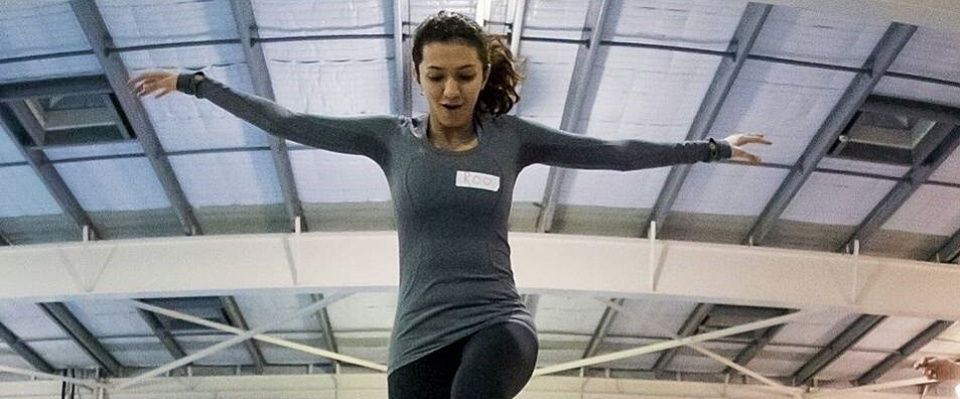
Why meetings can harm employee well-being
Posted on 10 Dec 2025
Anyone working in an organisation knows it: meetings follow one after another at a frantic pace. On…
Posted on 11 Nov 2024
By Matthew Schulz, journalist, Institute of Community Directors Australia
Sexual harassment can destroy organisations, wreck people’s careers, and trigger serious psychological harm, which is why not-for-profit leaders should do more to prevent problems in the first place.

Legal firm Maddocks, an Our Community partner, deals regularly with employment matters and is no stranger to the damaging fallout from sexual harassment cases, but partner Catherine Dunlop – who provides regular training in the area – says it doesn’t have to be that way.
Organisations can prevent trouble by treating sexual harassment as a health and safety issue, conducting risk assessments, stepping in early, taking complaints seriously and being transparent about policies.
“We now understand that employers need to do more than treat sexual harassment by providing some training and then being reactive when a problem emerges,” Ms Dunlop said.
“And we know what the risk factors are for sexual harassment, and where those risk factors can combine to make it likely that sexual harassment may occur in an organisation.”
Ms Dunlop said those risk factors included:
She said a starting point for some organisations was to get a better knowledge of what sexual harassment meant.
“It’s important to understand that most experiences of sexual harassment are not someone pressuring you to have sex. It's inappropriate comments about someone’s personal life or appearance, and frequent behaviour at that level can be as damaging as one-off more serious instances.”

“There's a reason that as employment lawyers, Maddocks always has people on call after Christmas, and it's to deal with the aftermath of the Christmas party,” Ms Dunlop said.
“And every year we have those instances, where people [are] exhausted, they have some alcohol, they let their guard down, they behave badly. People need to be responsible for their own actions, but if employers know that this happens in organisations every year, then it's not enough just to tell people not to do it and then clean up the aftermath. You’ve got to take preventative steps.”
Ms Dunlop said the biggest risk was power imbalances at work.
“Sexual harassment occurs when people think they can, because of power. And there will always be power differentials in organisations. You can have all the training and policies in the world, but if you have people who are vulnerable because their employment depends on their reputation, who depend on someone who's very powerful, who themselves can't be challenged, then the chances of there being sexual harassment increase.”
She said in the past, those perceived as “high value” members of the organisation would escape retribution because they were “an important part of the organisation, contribute a lot in terms of funds or reputation, or whatever it is”.
“But the problem is that it's not just about their impact on that one person that they sexually harassed, as horrific as that can be. It's also about the impact on everybody else who knows that they can ‘get away with it’ and what that does to the culture of the organisation.
“At the point that someone speaks up or the issue does get addressed, then the harm to the organisation as well as to that personal reputation is incredible. Some organisations may well fail over it.”
Ms Dunlop cited the Harvey Weinstein case as one in which the accused, a prominent movie producer and sexual predator, was considered “untouchable”, until nearly 90 victims spoke out, sparking the global #MeToo movement.
“It is no longer acceptable to protect high performers on the basis that ‘they've always been like that’, or they behave a bit badly,” she said.
Other risks included a lack of diversity across genders, cultures or sexual preferences.
Intersectionality can compound problems, Ms Dunlop said.
“If I am a gay woman where English is my second language and I'm in a wheelchair in a team of mostly able-bodied hetero men, my risk increases.”
People working long hours together, particularly away from the usual workplace, or travelling together, are also at higher risk.
Once a risk assessment highlights potential areas of weakness, leaders should address issues raised “as a health and safety problem”, Ms Dunlop said.
“We have to treat it like any other serious risk at work. We would have an obligation to eliminate it, and if we can't eliminate it, to reduce it as much as possible.”
Managers must be equipped to set minimum standards of behaviour in an organisation, then “step in early” and enable complaints to be taken seriously through a good process.
Ms Dunlop said the same risks applied to organisations of all sizes, from small to very large.
“If you're in a small organisation with only a few people, you may have no sense that anything will be taken seriously, where everyone knows one another, so you can't speak up. In a large organisation, again, you may feel like there are no options for you to speak up because there's “nothing in place”. That feeling of being isolated and being subject to that behaviour is equally risky in both.”

Ms Dunlop recommended a combination “top-down and bottom-up approach”.
Making changes at the top meant requiring leaders to set the standards and ensuring “fluency” among boards and CEOs about the risks and issues associated with sexual harassment.
“We have to have boards and executives and CEOs who have educated themselves on risk and are in a position to say ‘I'm pretty comfortable the organisation is on the right track because I'm having this reported to me and I'm measuring it right’.”
It was not enough to leave things to the people and culture or human resources department to respond to complaints, she said.
By “bottom up” she meant consulting with staff and other stakeholders to ask them what they believed the risks were of sexual harassment.
She said initial measures and consultation might uncover a spike in reports.
“That can be very valuable because you may have people tell you about issues they might have been sitting on.”
Consultation should also address factors that might stop people making reports or prevent action. This will inform leaders about whether staff trust the organisation to act.
Ms Dunlop said there were many resources available to help organisations wanting to ensure a safe workplace, but it was important to choose the right materials to address the specific problems at hand.

Posted on 10 Dec 2025
Anyone working in an organisation knows it: meetings follow one after another at a frantic pace. On…

Posted on 10 Dec 2025
As a qualified yoga instructor who learned the practice in her hometown of Mumbai, Ruhee Meghani…

Posted on 10 Dec 2025
Community Directors trainer Jon Staley knows from first-hand experience the cost of ignoring…

Posted on 10 Dec 2025
Stressed, overwhelmed, exhausted… if you’re on a not-for-profit board and these words sound…

Posted on 10 Dec 2025
The Institute of Community Directors Australia trains over 22,000 people each year, which gives us…

Posted on 03 Dec 2025
Many not-for-profit (NFP) board members in Australia are burnt out, overwhelmed and considering…

Posted on 26 Nov 2025
A roll call of Victoria’s brightest future leaders has graduated from a testing and inspiring…

Posted on 12 Nov 2025
At the Institute of Community Directors Australia, we believe that stronger communities make a…

Posted on 12 Nov 2025
Like many Community Directors members, Hazel Westbury is a community leader who isn’t easily…

Posted on 11 Nov 2025
I’ve seen what happens when fear of conflict wins out over taking a principled stand.

Posted on 11 Nov 2025
‘It’s not a question of enough, pal. It’s a zero-sum game. Somebody wins and somebody loses’.

Posted on 11 Nov 2025
Progressive economic Richard Denniss believes the constant hunt by governments for the political…